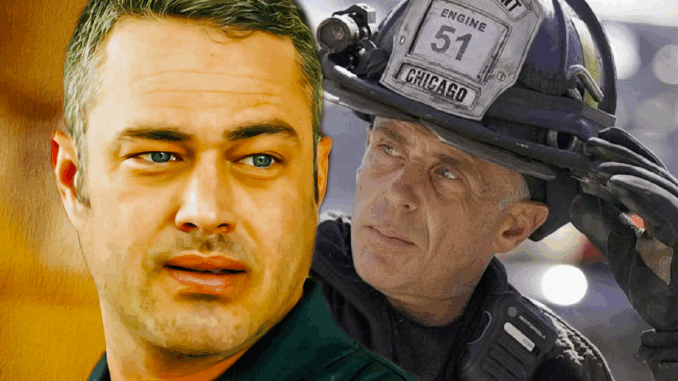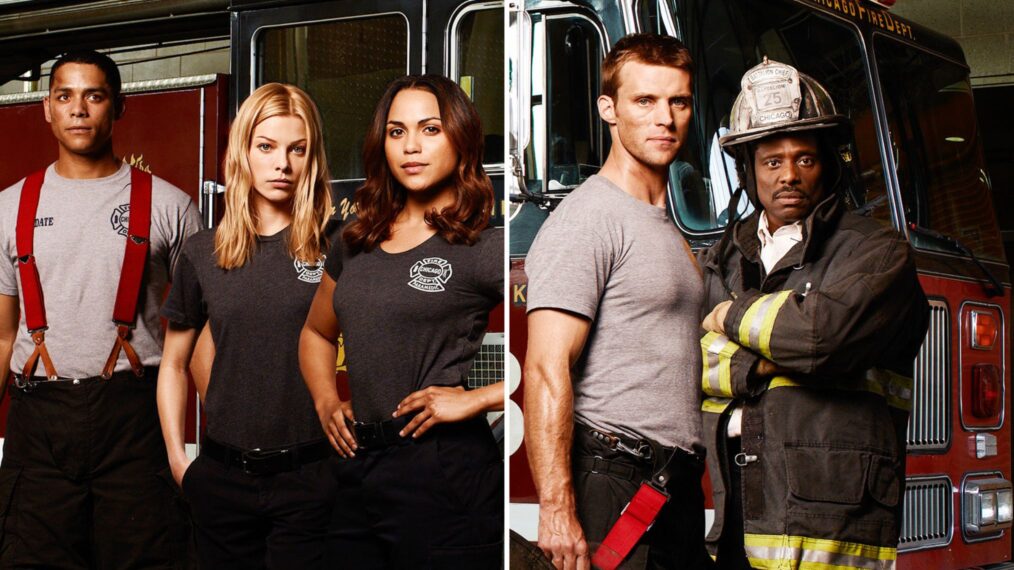
The Firehouse Isn’t What It Used to Be — And That’s the Point
For over a decade, Chicago Fire has been about more than fires, rescues, or adrenaline-pumping emergencies. It has been about the people of Firehouse 51 — the bonds they form, the traumas they endure, and the sacrifices they make. But as the show moves deeper into its fourteenth season, one thing has become crystal clear: Chicago Fire is not the same show it used to be. And perhaps that’s by design.
The departure of foundational characters like Matt Casey (Jesse Spencer), Kelly Severide (Taylor Kinney), and Stella Kidd (Miranda Rae Mayo) — either temporarily or for good — has left fans reeling. These aren’t just beloved figures; they were pillars of the narrative. Yet the void they leave behind has forced Chicago Fire to ask an uncomfortable but necessary question: What is the soul of Firehouse 51 when its most iconic voices are gone?
Rebuilding the Firehouse from the Inside Out
When Matt Casey left for Portland, it was a quiet heartbreak for longtime fans. He was the moral compass, the steady hand in crisis, and the emotional glue of the squad. For many, Chicago Fire without Casey felt like a pizza without cheese — technically still pizza, but not quite right.
But the show didn’t collapse. Instead, it began redistributing emotional weight onto other shoulders. Characters like Joe Cruz, Ritter, and even Gallo were given deeper arcs. The show leaned into their vulnerabilities, their mistakes, and their attempts to fill shoes that were, frankly, never meant to be filled. That’s not failure. That’s evolution.
Severide’s extended absences, reportedly due to Taylor Kinney’s personal hiatus, created a similar shift. For so long, Severide was the brooding counterpoint to Casey’s stoicism. Without him, the show’s tone adjusted. Boden stepped up with more gravitas than ever. Kidd, for a while, took on more than her fair share — though her own exit this season only compounded the leadership vacuum.
Now, with both of them out of regular rotation, Chicago Fire is leaning into new leadership — reluctant leaders, emerging voices, and most importantly, the community at large rather than any single star.
Can a Show Without Its Core Still Burn Bright?

The question is fair. Shows built around iconic ensembles often struggle when those pillars are removed. Think The Office post-Steve Carell or Grey’s Anatomy without Meredith Grey. But Chicago Fire seems to be attempting something riskier: not replacing these figures with equal star power, but letting the firehouse feel incomplete — because in real life, that’s what happens when someone leaves.
The show isn’t pretending everything is fine. It lets us feel the awkwardness, the instability, and the aching absence. In that way, it’s doing something quietly radical for a primetime procedural: allowing grief to be a constant companion.
Gallo’s internal conflict over his place in the squad. Cruz’s struggle to balance responsibility and loss. Violet’s search for direction after heartbreak. These aren’t just subplots — they’re a commentary on how organizations move forward when legends move on.
Fan Reactions: Divided, Yet Engaged
Fans, naturally, have opinions. Some are furious over the lack of Severide. Others feel Casey’s brief returns only highlight what the show has lost. But a surprising number of viewers have embraced the messiness. Reddit threads and Twitter debates aren’t just mourning — they’re dissecting, engaging, and arguing about what the new normal should look like.
And that’s the real proof that Chicago Fire still has heat. If fans were silent, if they stopped watching, that would be cause for alarm. But this? This is passion. This is a fanbase deeply invested in a show that’s choosing the harder path — realism over nostalgia, rebuilding over rehashing.
Where Do We Go from Here?
Season 14 seems poised to redefine what Chicago Fire is all about. Without a stable “core four,” the show has the opportunity to explore leadership as something fluid rather than fixed. Perhaps Firehouse 51 doesn’t need a new Casey or Severide — maybe it needs twenty percent more Ritter, ten percent more Mouch wisdom, and a whole lot of team collaboration.
There are whispers that Taylor Kinney may return. And Jesse Spencer’s guest appearances suggest Casey is still emotionally tethered to 51. But the show’s current path doesn’t hinge on their presence. It honors their legacies by not waiting for them.
The Fire Burns On
Change is hard. Long-running shows live or die by how they adapt. And Chicago Fire is taking one of the biggest creative gambles of its run — giving its younger cast the wheel and trusting that the audience will follow.
So far, it’s working.
The uniforms may look the same. The firehouse walls are unchanged. But inside? Everything’s shifting. And that might be the most realistic thing the show has ever done.
